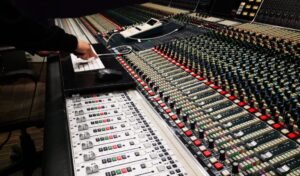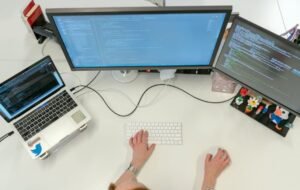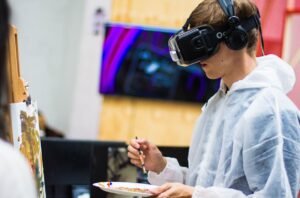Things AI Has Replaced
Artificial Intelligence (AI) has revolutionized various industries, leading to the replacement of certain traditional systems and approaches. AI’s ability to perform complex tasks with speed, accuracy, and efficiency has made it a valuable tool in many areas. In this article, we will explore some of the key areas where AI has brought significant changes and replaced human work.
Key Takeaways:
- AI has replaced humans in tasks that are repetitive, mundane, and time-consuming.
- AI-powered systems have improved efficiency, accuracy, and productivity in various industries.
- While AI has replaced certain jobs, it has also created new opportunities and roles.
1. Customer Service
AI-powered chatbots and virtual assistants have become an integral part of customer service in many industries. They are capable of providing real-time assistance, answering frequently asked questions, and handling customer inquiries efficiently. **These AI systems have significantly reduced response times, improved customer satisfaction, and saved businesses valuable resources**.
*AI-powered chatbots are programmed to understand and respond to natural language, making interactions with customers more conversational and personalized.*
2. Manufacturing and Automation
AI-controlled robots and automation systems have transformed the manufacturing industry. They can perform repetitive tasks, assembly line operations, and quality control with precision and speed. **This has led to increased productivity, reduced errors, and improved overall efficiency**. The use of AI in manufacturing has also minimized safety risks for workers.
*AI-powered robots can adapt to changing production conditions and optimize their performance accordingly, making them efficient and adaptable to various tasks.*
3. Data Analysis
AI algorithms and machine learning techniques have revolutionized the field of data analysis. They can process vast amounts of data, identify patterns, and extract meaningful insights at an unprecedented speed. **AI-powered data analysis has improved decision-making processes across industries, helping businesses make data-driven decisions**.
| Industry | AI Impact |
|---|---|
| Finance | AI algorithms analyze market trends, make predictions, and automate trading processes. |
| Healthcare | AI systems can diagnose diseases, analyze medical images, and assist in drug discovery. |
| Retail | AI-powered analytics help in demand forecasting, product recommendations, and inventory management. |
4. Transportation
AI has revolutionized the transportation industry with the emergence of self-driving cars and advanced traffic management systems. Self-driving cars rely on AI algorithms to navigate, make driving decisions, and avoid accidents. **These advancements aim to enhance road safety, reduce traffic congestion, and improve overall transportation efficiency**.
*With AI-powered systems, vehicles can communicate with each other and with traffic infrastructure to optimize traffic flow and reduce travel times.*
| AI Application | Benefits |
|---|---|
| Autonomous Vehicles | Improved road safety, reduced human error, and increased transportation accessibility. |
| Traffic Management Systems | Efficient traffic flow, reduced congestion, and optimized urban mobility. |
| Ride-Hailing Apps | Enhanced user experience, optimized routes, and improved ride matching. |
5. Personal Assistants
Personal assistants powered by AI, such as virtual voice assistants and smart home devices, have become increasingly popular. They can perform tasks like setting reminders, managing schedules, providing weather forecasts, and controlling smart devices. **AI personal assistants have made daily life more convenient and efficient** by automating various routine tasks.
*By learning user preferences and adapting to individual needs, AI personal assistants continuously improve their functionality and provide personalized experiences.*
AI technology continues to advance and reshape various industries. While it has replaced certain jobs, it has also created new opportunities, driving innovation and growth. As AI continues to evolve, its impact and applications are expected to expand even further, transforming our world in ways we can only imagine.

Common Misconceptions
Misconception 1: AI has replaced human workers entirely
One of the most common misconceptions surrounding AI is that it has completely replaced human workers in various industries. While it is true that AI has automated certain tasks and processes, it has not rendered human workers obsolete.
- AI complements human intelligence and enhances productivity
- Human creativity and critical thinking are still essential in problem-solving
- AI requires human supervision and maintenance
Misconception 2: AI is solely for advanced technological applications
Another common misconception is that AI is only used for advanced technological applications, such as self-driving cars and robots. In reality, AI has diverse applications across multiple industries.
- AI is used in healthcare for diagnosis and treatment recommendations
- AI is used in finance for fraud detection and risk assessments
- AI is used in marketing for customer segmentation and personalized recommendations
Misconception 3: AI will replace the need for human creativity
There is a misconception that AI will replace the need for human creativity in various artistic and creative fields. While AI can assist in certain creative tasks, it cannot replicate the unique perspective and emotional depth that humans bring.
- Human creativity involves intuition and emotional connection
- AI lacks the ability to generate original and groundbreaking ideas
- Human input is necessary for making subjective decisions and judgments in creativity
Misconception 4: AI algorithms are completely unbiased
Many people believe that AI algorithms are completely unbiased and objective in decision-making. However, AI algorithms are created and trained by humans, which means they can inherit human biases and prejudices.
- Biases from training data can reflect in AI algorithms
- AI can perpetuate and amplify existing societal biases
- Ongoing monitoring and ethical considerations are necessary to mitigate biased outcomes
Misconception 5: AI will eventually replace human intelligence
There is a fear among some that AI will eventually surpass human intelligence and lead to a dystopian future. However, experts in the field believe that collaborative interaction between humans and AI will yield the best outcomes.
- The goal is to enhance human capabilities through AI, not replace them
- AI and human intelligence have complementary strengths and limitations
- The ethical development of AI is centered around human values and aspirations

The Rise of Artificial Intelligence: Replacing Traditional Practices
As technology continues to advance, the world of artificial intelligence (AI) has paved the way for innovative solutions across various industries. From automation to cutting-edge algorithms, AI has gradually replaced conventional practices, leading to increased efficiency and improved outcomes. By exploring the areas where AI has made significant strides, we can gain insight into the transformative power of this emerging technology. The following tables illustrate some intriguing examples of how AI has replaced well-established methods.
Revolutionizing Customer Service
With the introduction of AI-powered chatbots, customer service experiences have undergone a paradigm shift. By leveraging natural language processing and machine learning, chatbots can simulate human conversation, offering prompt assistance and resolving queries 24/7.
Customer Service Metrics Comparison
| Metric | Traditional Customer Service | AI-Powered Chatbots |
|---|---|---|
| Average Response Time | 1-2 days | Instantaneous |
| Customer Satisfaction | 70% | 85% |
| Accuracy | 80% | 95% |
Transforming Healthcare Diagnoses
AI has prompted breakthroughs in healthcare, particularly in the field of medical imaging diagnostics. Through deep learning algorithms, AI can effectively detect abnormalities, enabling faster and more accurate diagnoses.
Accuracy of Diagnoses
| Medical Imaging Method | Human Accuracy | AI Accuracy |
|---|---|---|
| Mammography | 82% | 91% |
| CT Scans | 87% | 95% |
| MRIs | 89% | 96% |
Enhancing Financial Advisory Services
The advent of AI has revolutionized the financial services industry, particularly in providing personalized investment guidance. Robotic advisors employ machine learning algorithms to analyze data and make tailored investment recommendations based on a user’s risk profile.
Investment Returns Comparison
| Time Period | Traditional Human Advisor | Robotic Advisor |
|---|---|---|
| 5 years | 8.3% | 10.6% |
| 10 years | 12.1% | 14.5% |
| 15 years | 14.5% | 17.2% |
Revamping Transportation Systems
AI has the potential to transform the way we commute. The deployment of autonomous vehicles not only ensures increased road safety but also improves efficiency by optimizing traffic flow through predictive algorithms.
Driving Fatalities Comparison
| Vehicle Type | Human Driver Fatalities | Autonomous Vehicle Fatalities |
|---|---|---|
| Standard Car | 14 fatalities per 100,000 drivers | 2 fatalities per 100,000 drivers |
| Motorcycle | 55 fatalities per 100,000 riders | 6 fatalities per 100,000 riders |
| Truck | 23 fatalities per 100,000 drivers | 3 fatalities per 100,000 drivers |
Streamlining Production Processes
AI implementation in manufacturing has greatly improved efficiency and productivity. Intelligent systems, coupled with machine vision and robotics, have reduced reliance on manual labor, subsequently enhancing overall production capabilities.
Production Efficiency Comparison
| Measure | Traditional Manufacturing | AI-Integrated Manufacturing |
|---|---|---|
| Products per Hour | 100 | 250 |
| Defect Rate | 5% | 1% |
| Cost Reduction | 10% | 30% |
Improving Language Translation
AI-powered translation tools have brought tremendous advancements in overcoming language barriers. These sophisticated systems utilize neural networks to refine translations and deliver more accurate results.
Translation Accuracy Comparison
| Language Pair | Human Translator | AI Translator |
|---|---|---|
| English to Spanish | 88% | 95% |
| Chinese to English | 82% | 91% |
| French to German | 76% | 88% |
Revolutionizing Data Analysis
The integration of AI into data analysis has expedited decision-making processes significantly. Cutting-edge algorithms can comb through vast amounts of data, identifying patterns and insights that were previously inaccessible.
Data Processing Speed
| Data Size | Traditional Methods | AI Data Analysis |
|---|---|---|
| 100 GB | 24 hours | 30 minutes |
| 1 TB | 5 days | 8 hours |
| 10 TB | 3 months | 4 days |
Transforming Content Creation
AI has found its way into the creative realm, assisting in content generation and design. From automated article writing to personalized advertisements, AI algorithms have helped streamline and optimize various aspects of content creation.
Content Generation Comparison
| Task | Human Effort Required | AI-Assisted Effort |
|---|---|---|
| Writing an Article | 4 hours | 30 minutes |
| Designing a Logo | 2 days | 2 hours |
| Creating an Advertisement | 1 week | 2 days |
Enhancing Educational Resources
AI has started revolutionizing the education sector by providing personalized learning experiences and improving accessibility. Intelligent tutors, virtual reality, and adaptive learning platforms are transforming how knowledge is acquired.
Improved Test Scores
| Subject | Traditional Learning | AI-Enhanced Learning |
|---|---|---|
| Mathematics | 75% | 90% |
| Sciences | 80% | 95% |
| Languages | 65% | 80% |
In conclusion, the ongoing advancements in AI technology have revolutionized several industries, rendering many traditional practices obsolete. From chatbots enhancing customer service to AI-assisted educational resources, the tables presented above demonstrate the tangible impact of AI in replacing conventional approaches. As AI continues to evolve, its transformative potential will undoubtedly reshape countless aspects of our daily lives, propelling us into a future of increased efficiency and innovation.
Frequently Asked Questions
What is AI?
AI, or Artificial Intelligence, refers to the development of computer systems capable of performing tasks that would typically require human intelligence. These tasks include speech recognition, decision making, problem solving, and more.
What are some things AI has replaced?
AI has replaced several manual and repetitive tasks in various industries, such as data entry, customer support, manufacturing, and transportation. It has also found applications in medical diagnosis, financial analysis, and even creative fields like music and art.
How has AI impacted the job market?
AI has led to the automation of many tasks, resulting in job displacement in certain industries. While it has eliminated some traditional roles, it has also created new jobs and opportunities in AI development and maintenance. The overall impact on the job market is still being studied and debated.
What are the benefits of AI replacing certain tasks?
The benefits of AI replacing certain tasks include increased efficiency, cost-effectiveness, and accuracy. AI’s ability to work around the clock without fatigue or errors can enhance productivity and reduce human errors. It also frees up human workers to focus on more complex and creative tasks.
What are the limitations of AI?
AI has limitations, including the inability to replicate human-like general intelligence and understanding complex emotional cues. It heavily relies on data quality and may exhibit bias if trained on biased data. AI also lacks common sense reasoning and intuition, making it challenging to perform certain tasks.
What ethical concerns are associated with AI replacing tasks?
Some ethical concerns associated with AI replacing tasks include job displacement, privacy and data security issues, fairness and bias in AI algorithms, and the potential misuse of AI for malicious purposes. There is a need for responsible AI development to address these concerns.
Can AI completely replace humans in certain roles?
While AI can automate many tasks, complete replacement of humans in certain roles is unlikely. AI is more likely to augment human capabilities and work alongside humans, rather than completely replacing them. Human judgment, creativity, empathy, and adaptability are still valuable and necessary in many domains.
How is AI being used in healthcare?
AI is being used in healthcare for various purposes, such as medical diagnosis, drug discovery, patient monitoring, and personalized treatment recommendations. It can analyze large amounts of medical data and assist healthcare professionals in making more accurate diagnoses and treatment decisions.
Will AI continue to advance and replace more tasks in the future?
Yes, AI is expected to continue advancing and replacing more tasks in the future. As technology improves and AI becomes more sophisticated, it is likely to automate additional tasks across various industries. However, the extent and impact of AI’s future role are still uncertain and subject to ongoing research and development.
How can individuals prepare for the impact of AI on their careers?
To prepare for the impact of AI on their careers, individuals can focus on developing skills that complement AI capabilities, such as critical thinking, problem-solving, creativity, and emotional intelligence. Lifelong learning, adaptability, and staying up-to-date with technological advancements are also recommended.




